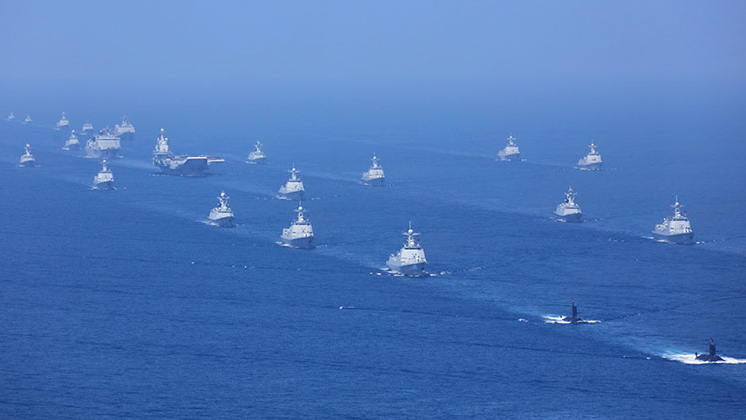BEIJING: On the Ren’ai Jiao issue, who is the troublemaker and provocateur? Who is breaking international law and endangering peace and stability in the South China Sea?
The answers to these questions are easily discerned from the following facts:
The Nansha Qundao (the Nansha Islands), which include the Ren’ai Jiao reef, have always been China’s territory. The Philippine side clearly knows that its own territory — defined by a series of international treaties, including the 1898 Treaty of Peace between the United States of America and the Kingdom of Spain — does not include the Nansha Qundao.
In 1999, a Philippine military vessel was illegally “grounded” on Ren’ai Jiao. China immediately made démarches to the Philippines, and the Philippines repeatedly pledged that it would tow the vessel away. But 25 years on, it is still there.
Utilizing a similar tactic, the Philippines said that it would not reinforce the grounded warship and that it would provide China with advanced warning of any resupply operations. However, the country again failed to honor its promise and made attempts to deliver construction materials for the large-scale repair and reinforcement of the warship, in an apparent attempt to occupy Ren’ai Jiao permanently.
It is clear that the Philippines’ string of false accusations against China aims to hide the fact that it has broken its promises and common understanding with China on the proper handling of the situation.
According to Article 5 of the Declaration on the Conduct of Parties in the South China Sea (DOC), which was signed by China and ASEAN member states, the parties to the declaration agree to exercise self-restraint in the conduct of activities that would complicate or escalate disputes and affect peace and stability by, among other undertakings, refraining from the action of inhabiting the presently uninhabited islands, reefs, shoals, cays, and other features.
Ren’ai Jiao is uninhabited. Parties to the declaration should continue hosting zero personnel and facilities on the reef. But recently, a spokesperson for the Philippine military openly vowed to build permanent structures on Ren’ai Jiao. The Philippines has also repeatedly dispatched personnel to set foot on China’s Tiexian Jiao and other uninhabited islands and reefs in the South China Sea that belong to China, seriously contravening the principles of the DOC.
Over the years, China and ASEAN member states have insisted that countries directly concerned with the Ren’ai Jiao issue manage their disputes properly through dialogue and consultation, and that China and ASEAN member states work together to maintain peace and stability in the South China Sea. This has effectively maintained the overall stability of the region.
However, for some time, the Philippines has been pulling non-regional actors into the South China Sea affairs to back Philippine provocations and violation of China’s sovereignty.
Such moves by the Philippines undermine the consensus reached by the countries in the region, and will only complicate and endanger the situation in the South China Sea.
International relations experts pointed out that the United States is using the Philippines as a pawn to destabilize the South China Sea. But a pawn will only end up being abandoned.
Launching false accusations against China will by no means cover up the truth. The South China Sea is a shared home for the countries in the region. It is a sea of peace, friendship and cooperation, and it serves the common interests and is the shared responsibility of these countries.
The Philippines must cease its provocative and dangerous acts before they bring harm to the Philippines and the peaceful environment of the countries in the region, and must return to the right track of properly managing and resolving disputes through dialogue and consultation as soon as possible.


